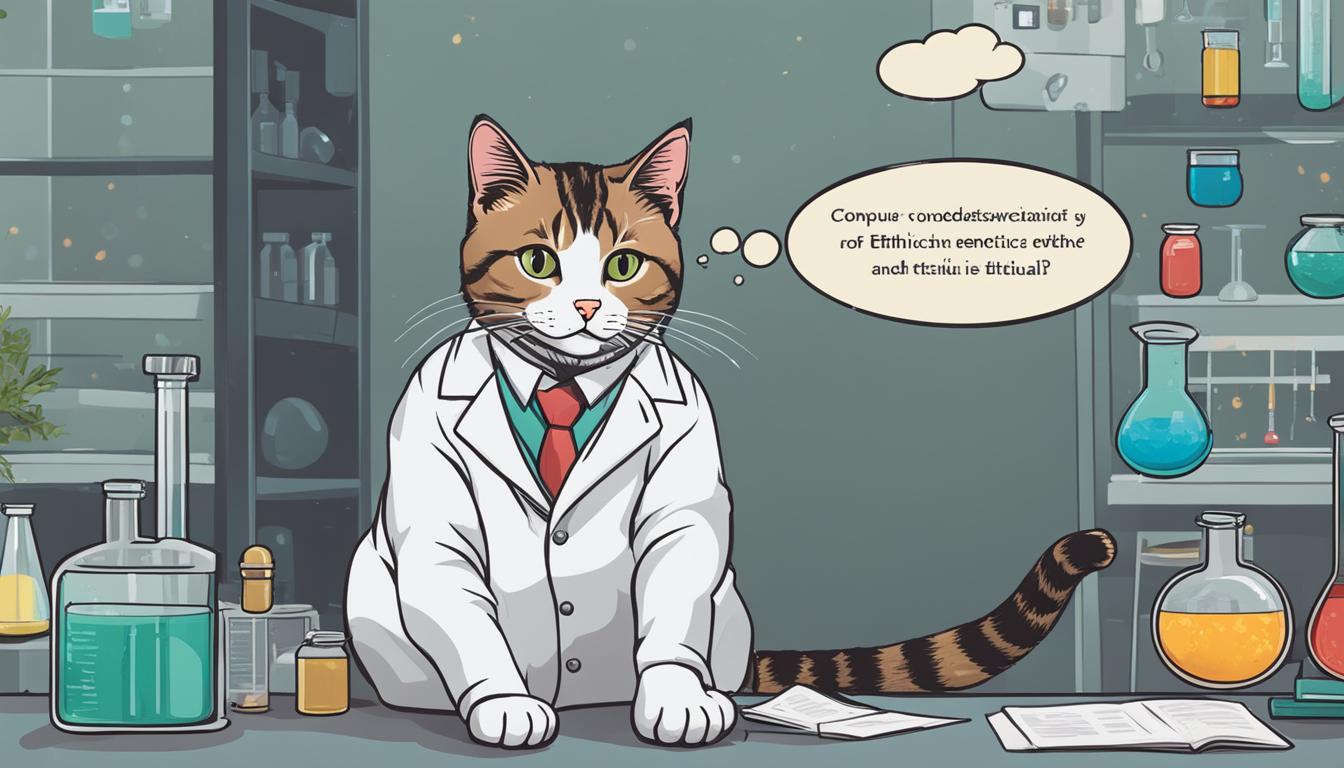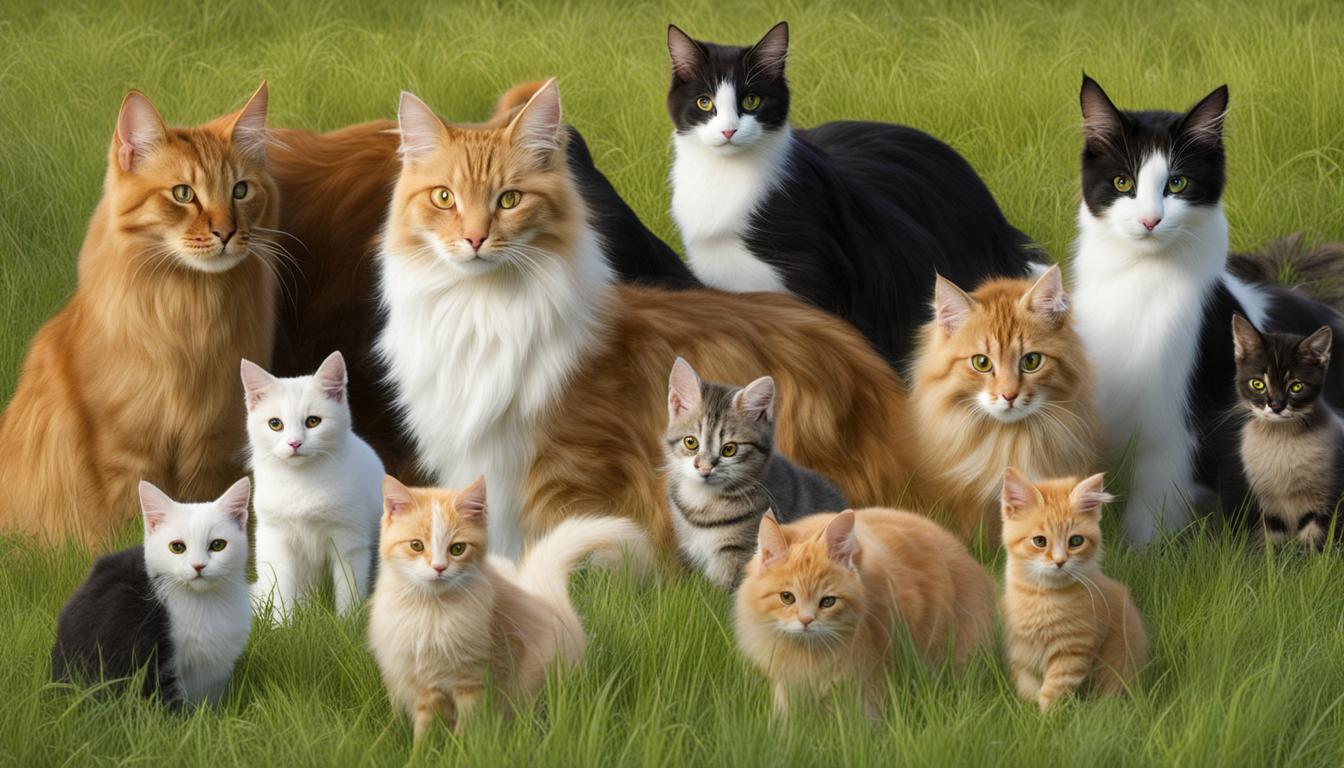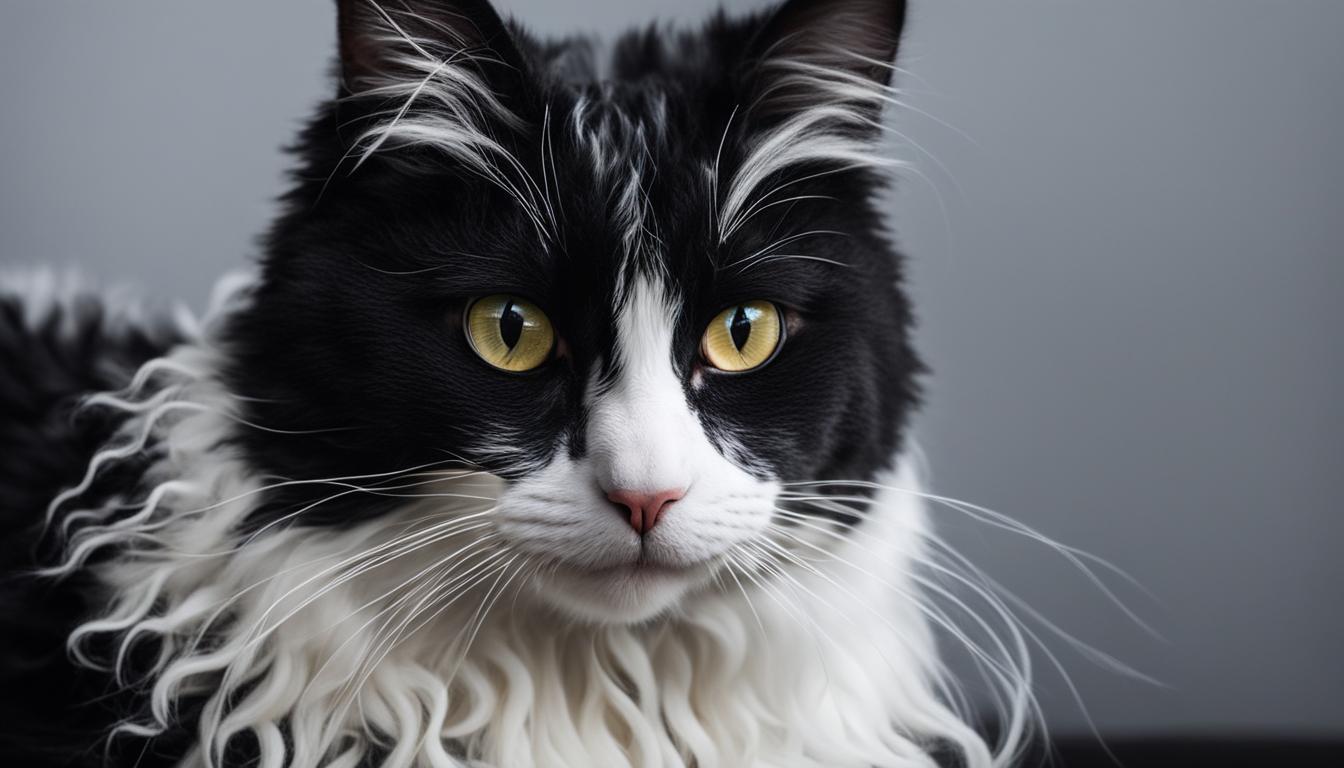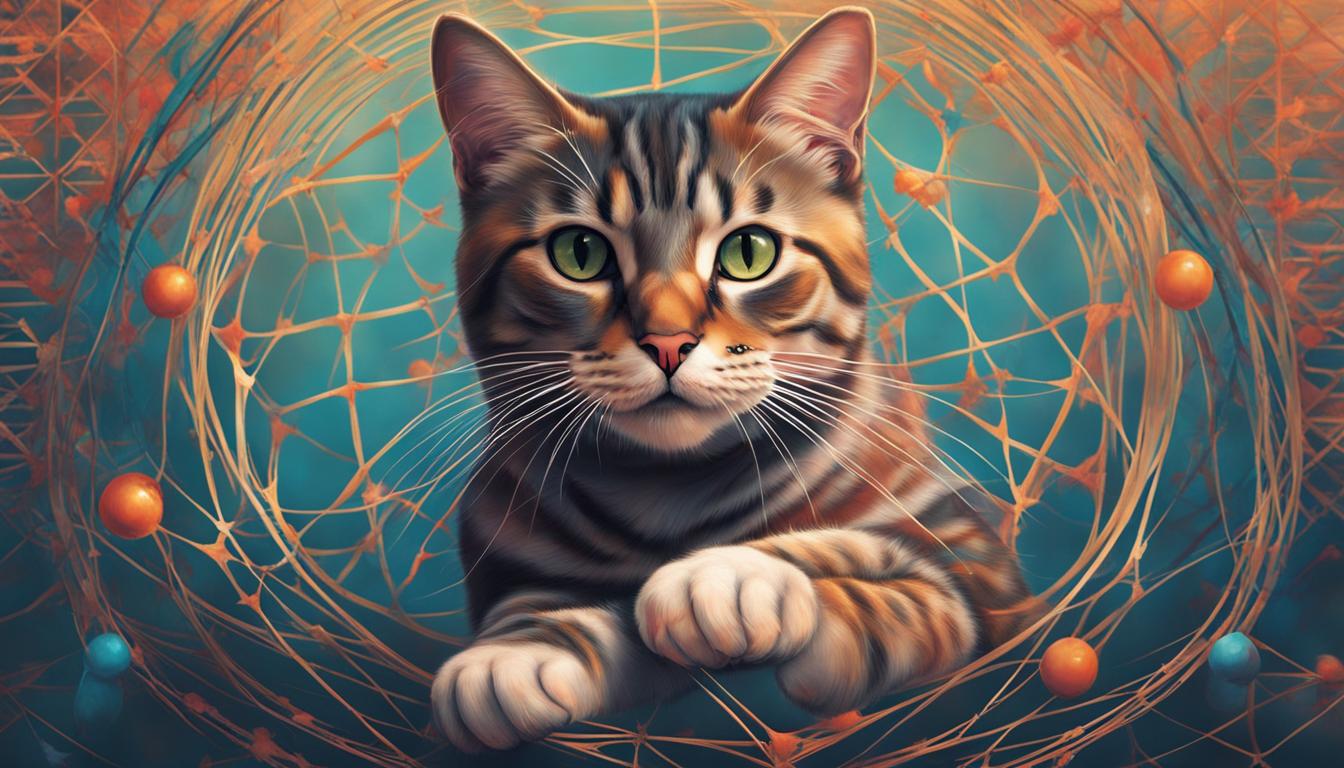Genetic modification has become a hot topic in recent years, and cats are not exempt from this scientific revolution. As a journalist, I have delved into the world of cat genetic engineering to explore the future prospects and ethical debates surrounding this field. Are we on the verge of creating designer cats, or should we tread cautiously in this brave new world?
Society is grappling with the ethical considerations that arise when we tamper with nature. What are the implications for animal welfare? How do we establish ethical boundaries for genetic engineering? These questions loom large as scientists continue to push the boundaries of what is scientifically possible.
As a cat lover, I am genuinely curious about the future of genetic engineering in feline companions. Will we see hypoallergenic cats for those with allergies? Could we one day bring back extinct species through genetic manipulation? The possibilities are both fascinating and daunting, and it is essential that we navigate this brave new world with sensitivity and caution.
Key Takeaways:
- Ethical considerations play a significant role in cat genetic modification.
- The future of genetic engineering in cats holds promises and challenges.
- The welfare of genetically engineered animals should be a top priority.
- Public perception and societal values shape the ethical debates surrounding this field.
- Striking a balance between scientific progress and ethical considerations is crucial.
Ethical Issues in Cat Genetic Modification
The modification of cat genetics raises a myriad of ethical concerns. One of the primary considerations is the invasiveness of the procedures involved. Altering the DNA of cats often requires invasive techniques such as in vitro fertilization or embryo manipulation. These interventions may raise questions about the welfare of the animals involved and whether the potential benefits outweigh the potential harm.
Another ethical concern is the large number of animals required for research purposes. Genetic engineering experiments often involve breeding and manipulating multiple generations of animals to achieve the desired traits. This raises questions about the ethical implications of using animals for scientific purposes and the potential for harm or suffering endured by these animals.
Genetic engineering in cats poses a challenge when it comes to establishing ethical limits. While some genetic modifications may be done to improve the health or quality of life of cats, there is a need to determine what limits should be placed on genetic engineering to prevent potential abuses and ensure the well-being of the animals involved.
The use of genetically engineered animals, whether for companionship, research, or farming purposes, requires careful consideration of the ethical implications involved. It is crucial to balance the potential benefits of genetic engineering with a duty to ensure the welfare of animals and respect for their inherent value.

Table: Ethical Concerns in Cat Genetic Modification
| Ethical Concerns | Description |
|---|---|
| Invasiveness of Procedures | The use of invasive techniques for genetic modification raises questions about the welfare of animals and the potential harm caused by these procedures. |
| Large Number of Animals | Genetic engineering experiments often require breeding and manipulating multiple generations, raising ethical concerns about the use of animals for scientific purposes and potential suffering endured by these animals. |
| Establishing Ethical Limits | There is a need to determine ethical limits on genetic engineering in cats to prevent potential abuses and ensure the well-being of the animals involved. |
Cat Genetic Editing and Ethics: Exploring Future Trends in Cat Genetic Engineering
Genetic engineering holds significant potential for revolutionizing the world of companion animals, particularly cats. The ability to edit the genetic makeup of cats opens up possibilities for creating hypoallergenic breeds, enhancing their physical characteristics, and even cloning deceased pets. However, along with these exciting prospects comes a host of ethical considerations that must be carefully examined.
“Genetic engineering offers the promise of unlocking new opportunities for cat owners, but it also raises important ethical questions,” explains Dr. Jane Peterson, a renowned veterinary geneticist. “We must navigate these uncharted waters with caution to ensure the welfare of the animals involved and maintain public trust.”
One of the key ethical concerns in cat genetic editing is determining the limits of modification. While removing genes responsible for allergenic proteins may benefit individuals with allergies, it raises questions about altering a species to suit human preferences. Similarly, the practice of cloning cats raises ethical dilemmas surrounding the creation of genetically identical animals and the potential psychological impact on the cloned individuals.
To shed light on these ethical considerations, a comprehensive analysis of the potential benefits and risks associated with cat genetic engineering is crucial. Such an analysis would enable veterinarians, researchers, and the public to engage in meaningful discussions and make informed decisions about the future of cat genetic modification.
“As advancements in genetic engineering continue to unfold, it is imperative that we maintain a strong ethical framework,” emphasizes Dr. Peterson. “By considering the welfare of the animals, the potential impact on biodiversity, and the societal values surrounding genetic modification, we can ensure a responsible and sustainable approach to cat genetic engineering.”
Stay tuned for Section 4, where we will explore the potential applications of genetic engineering in wild animals and the ethical considerations that accompany these advancements.
Genetic Engineering in Wild Animals
The field of genetic engineering has not only impacted domesticated animals, but it also holds potential applications in the modification of wild animal species. One of the most discussed approaches is cloning, which could be used to preserve or even revive extinct or endangered species. For example, scientists have contemplated the possibility of cloning the thylacine, a species that went extinct in the early 20th century, or the woolly mammoth, which disappeared thousands of years ago.
While the idea of cloning wild animals may seem intriguing, it is not without its challenges and concerns. The conservation community has expressed apprehension about the acceptance of cloning techniques and the potential diversion of funding from other conservation efforts. Furthermore, ethical considerations must be taken into account to ensure the well-being of the cloned animals and the preservation of genetic diversity in small populations. Striking a balance between the potential benefits and the ethical implications of genetic engineering in wild animals is crucial.
| Pros | Cons |
|---|---|
| Preservation of extinct or endangered species | Potential diversion of funding from other conservation efforts |
| Conservation of genetic diversity in small populations | Uncertainty surrounding the acceptance of cloning techniques |
| Potential for ecological restoration | Ethical concerns about the well-being of cloned animals |
As genetic engineering continues to advance, it is important to thoroughly assess the potential impact and ethical implications of modifying wild animal species. Taking into consideration the perspectives of conservationists, scientists, and the public, we can navigate the complexities of genetic engineering in the wild and make informed decisions that prioritize both biodiversity preservation and ethical responsibility.
Genetic Engineering in Farm Animals
Genetic engineering holds immense potential in improving various aspects of agriculture, including the genetic modification of farm animals. Through genetic alterations, animals such as pigs and sheep can exhibit enhanced productivity, improved food quality, and increased disease resistance. For example, genetically engineered pigs can express higher levels of growth hormone, leading to more efficient meat production. Similarly, genetically modified sheep can produce higher-quality milk, benefiting both farmers and consumers.
Furthermore, genetic engineering can contribute to environmental sustainability in the agricultural sector. For instance, pigs can be genetically modified to break down dietary phosphorus in their manure, reducing environmental pollution. This innovation has the potential to mitigate the negative impact of animal farming on water systems and ecosystems. By harnessing genetic engineering techniques, farmers can produce food more efficiently, reduce waste, and minimize the ecological footprint of their operations.
“Genetic engineering in farm animals offers substantial opportunities for improving productivity, food quality, and environmental sustainability.”
Despite the immense benefits, public apprehension and ethical concerns surround the genetic engineering of farm animals. It is crucial to address these concerns through transparent communication, stakeholder engagement, and comprehensive risk assessments. Ensuring the welfare of genetically modified animals and considering their impact on biodiversity and ecosystems is of utmost importance.
| Prospects of Genetic Engineering in Farm Animals | Impact on Cats |
|---|---|
| Increased productivity and efficiency | Can lead to higher-quality meat and milk production in genetically modified cats |
| Enhanced disease resistance | Genetically modified cats can be engineered to resist certain diseases |
| Reduced environmental pollution | Genetically modified cats can be designed to break down harmful substances in their waste |
| Improved food quality | Genetic alterations can result in cats producing higher-quality meat and milk |
The future of genetic engineering in farm animals holds immense promise for addressing global food security challenges, improving animal welfare, and reducing the environmental impact of agriculture. By striking a balance between scientific advancements and ethical considerations, we can maximize the benefits of genetic engineering while safeguarding animal welfare and environmental sustainability.
Genetic Engineering in Research Animals
Research animals play a crucial role in biomedical studies, where their genetics are often modified to gain a deeper understanding of gene function, model human diseases, and develop potential treatments. With advancements in genetic engineering technologies like CRISPR, researchers now have more precise tools to edit animal genomes and create models that closely resemble human conditions. These genetically engineered animals provide valuable insights into disease mechanisms, aid in the development of new therapies, and contribute to scientific advancements in various fields.
One example of genetic engineering in research animals is the creation of mouse models with specific genetic mutations that mimic human diseases such as cancer, Alzheimer’s, and diabetes. These models allow scientists to study the effects of targeted gene alterations on disease development and progression, potentially leading to the identification of new therapeutic targets. By studying genetically modified animals, researchers can also gain a better understanding of the role different genes play in complex biological processes and explore potential gene therapies.
Furthermore, genetically engineered animals are used in drug development and testing. These animals can be modified to express specific human drug targets, helping researchers evaluate the efficacy and toxicity of potential drug candidates. Genetically modified animals can also be used to study xenotransplantation, a field focused on transplanting organs or tissues from one species to another. By introducing human genes into animal models, researchers can investigate the compatibility and safety of such transplants, paving the way for advancements in organ transplantation.
In summary, genetic engineering plays a crucial role in research animals, enabling scientists to gain a deeper understanding of gene function, study human diseases, and develop potential treatments. Genetically modified animal models provide valuable insights into disease mechanisms, aid in drug development and testing, and contribute to scientific advancements across various disciplines. As technology continues to advance, so too will the capabilities of genetic engineering in research animals, opening up new possibilities for medical and scientific breakthroughs.
The Importance of Ethical Considerations
When it comes to genetic modification in cats, ethical considerations play a crucial role. As we delve into altering cat DNA, it is imperative to prioritize the well-being of these animals and address any potential welfare concerns. The ethical debates surrounding genetic modification in cats revolve around various aspects, including the invasiveness of procedures, the number of animals involved in research, and the establishment of ethical limits for genetic engineering. As responsible scientists, veterinarians, and society, it is our duty to carefully navigate these debates and ensure the ethical implications are thoroughly considered.
Public perception and societal values are significant factors in shaping the ethical discourse on genetic modification. Understanding and incorporating the public’s perspectives, concerns, and values is crucial. Another critical consideration is the impact of genetic engineering on biodiversity and conservation efforts. Genetic modification in cats should not compromise the preservation of species diversity and the ecological balance. Striking a balance between scientific progress and ethical considerations is essential for the responsible development of cat genetic modification.
As Dr. Jane Goodall once said, “The greatest danger to our future is apathy,” and this resonates deeply in the context of ethical debates on genetic modification. We must actively engage in ongoing conversations, promote transparency, and involve all stakeholders to ensure that our advancements in genetic engineering align with our ethical responsibilities towards animals and the environment.
By upholding ethical standards and embracing a comprehensive approach that prioritizes animal welfare, species diversity, and public engagement, we can navigate the complex landscape of genetic modification in cats. The ultimate goal should be to harness the potential benefits of genetic engineering while upholding the highest standards of ethical conduct.

Table: Ethical Considerations in Genetic Modification of Cats
| Aspect | Key Points |
|---|---|
| Invasiveness of Procedures | Minimizing invasive procedures to ensure the well-being of genetically modified cats. |
| Animal Welfare | Addressing potential welfare concerns and ensuring the highest standards of care for genetically modified cats. |
| Ethical Limits | Establishing ethical boundaries and guidelines for genetic engineering in cats. |
| Public Perception | Incorporating public perspectives, concerns, and values into the ethical discourse. |
| Impact on Biodiversity | Preserving species diversity and avoiding adverse effects on the environment. |
Conclusion
As I delved into the world of cat genetic modification, I couldn’t help but ponder the moral questions that arise. On one hand, the potential benefits of disease prevention, biodiversity preservation, and scientific advancements seem promising. On the other hand, concerns about animal welfare, species diversity, and public perception weigh heavily.
Striking the right balance is crucial as we navigate this complex field. Responsible and sustainable development of cat genetic modification requires continuous discussions, transparency, and the involvement of all stakeholders. It is only through open dialogues that we can address the ethical challenges head-on and ensure that the welfare of these feline companions remains a top priority.
So, what lies ahead for cat DNA modification? The answer lies in our collective willingness to uphold ethical standards while embracing the possibilities that genetic engineering offers. By finding the equilibrium between scientific progress and moral considerations, we can pave the way for a future where cats not only benefit from genetic modifications but also thrive in an environment that respects their well-being and the delicate balance of nature.
FAQ
What is genetic engineering in animals?
Genetic engineering in animals involves the modification of an animal’s DNA through various techniques, such as transgenesis and gene manipulation, to achieve specific traits or outcomes.
What are the ethical concerns related to genetic engineering in cats?
Ethical concerns in cat genetic modification include the invasive nature of procedures, the welfare of animals involved in research, the establishment of ethical limits, and the potential unanticipated welfare concerns.
How is genetic engineering used in companion animals?
Genetic engineering in companion animals can be used to create hypoallergenic cats, such as by removing the gene responsible for the major cat allergen. It can also be used to create genetically modified ornamental fish or to clone companion animals.
What are the potential applications of genetic engineering in wild animals?
Genetic engineering in wild animals, particularly through cloning, has the potential to preserve or revive extinct or endangered species. However, ethical considerations and concerns within the conservation community must be taken into account.
How is genetic engineering used in farm animals?
Genetic engineering in farm animals aims to improve animal productivity, food quality, disease resistance, and environmental sustainability. Examples include animals that express higher levels of growth hormone or produce higher-quality milk and meat.
How is genetic engineering used in research animals?
Genetically engineered animals are extensively used in biomedical research to understand gene function, model human diseases, and study xenotransplantation. They are important in drug development and testing.
Why is it important to consider ethical implications in genetic modification?
It is important to consider ethical implications in genetic modification to ensure the well-being of the animals involved and address potential welfare concerns. Public perception, biodiversity preservation, and conservation efforts are also important factors to consider.





